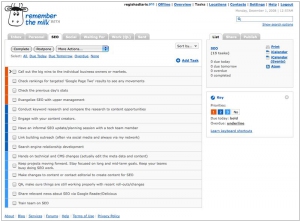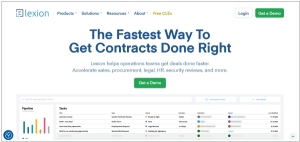Google Keep vs Remember The Milk
September 10, 2023 | Author: Adam Levine
15
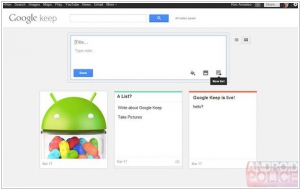
Cloud-based note taking service designed to help people keep track of their thoughts, scribbles and notes. With Keep you can quickly jot ideas down when you think of them and even include checklists and photos to keep track of what’s important to you. Your notes are safely stored in Google Drive and synced to all your devices so you can always have them at hand. Available on Android
Google Keep and Remember The Milk are both popular task management apps, but they have distinct differences in terms of features and user experience.
Google Keep is a simple and lightweight note-taking app that allows users to create and organize notes, reminders, and to-do lists. It offers a clean and intuitive interface with basic task management features such as due dates, reminders, and color-coded labels. Google Keep is known for its seamless integration with other Google services, making it convenient for users already using Google's ecosystem.
Remember The Milk, on the other hand, is a more robust and feature-rich task management app designed for users who need advanced functionalities and customization options. It offers a comprehensive set of features including due dates, recurring tasks, priorities, tags, location-based reminders, and smart lists. Remember The Milk also integrates with various third-party apps and services, allowing users to sync tasks across multiple platforms.
See also: Top 10 Productivity software
Google Keep is a simple and lightweight note-taking app that allows users to create and organize notes, reminders, and to-do lists. It offers a clean and intuitive interface with basic task management features such as due dates, reminders, and color-coded labels. Google Keep is known for its seamless integration with other Google services, making it convenient for users already using Google's ecosystem.
Remember The Milk, on the other hand, is a more robust and feature-rich task management app designed for users who need advanced functionalities and customization options. It offers a comprehensive set of features including due dates, recurring tasks, priorities, tags, location-based reminders, and smart lists. Remember The Milk also integrates with various third-party apps and services, allowing users to sync tasks across multiple platforms.
See also: Top 10 Productivity software
Google Keep vs Remember The Milk in our news:
2023. Google Keep finaly introduces text formatting support
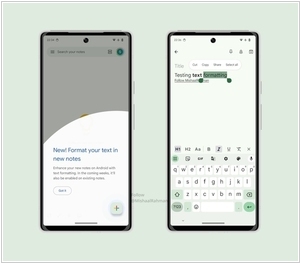
Google has finally introduced a much-needed improvement to its note-taking platform, Google Keep. When you click on the plus sign to access the extended options, a distinct underlined icon resembling the letter "A" appears in the toolbar. This icon provides access to various formatting choices, such as H1 and H2 for different heading sizes. Additionally, the "Aa" option conveniently returns the text to its default format. Other formatting features, including bold, italics, underlining, and strikethrough, are also available. Another new feature known as "version history" is now available in the web version of Keep. This feature allows users to review previous versions of text-based revisions, excluding any images. It's important to note that this version history feature is specifically designed for text-based notes and currently does not support notes containing images in any form.
2023. Google Keep adds version history
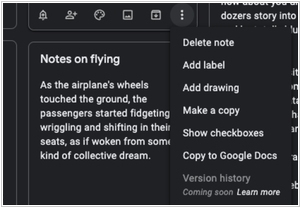
Google Keep, the free note-taking application from Google, allows users to quickly jot down notes that seamlessly sync with Gmail. However, in comparison to other popular note-taking apps, Keep has a notable limitation—it lacks the capability to display the version history of your notes. Consequently, any modifications made to a note become irreversible. The good news is that this is about to change. Upon visiting Keep's web version at keep.google.com, selecting a note, and accessing the three dots menu at the bottom, a forthcoming feature called "version history" can be observed. Although currently grayed out with a "coming soon" label, according to Google's help document, this option will soon enable users to download a text file containing previous versions of their notes or lists, providing a comprehensive view of changes made over time.
2022. Google is adding new Drive, Docs, Sheets, Slides and Keep optimizations for tablets
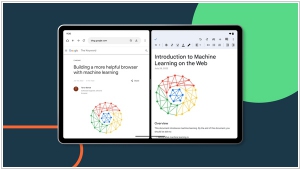
Google unveiled Android 12L earlier this year, aiming to enhance the usability of tablets. During the I/O conference, the company revealed its intention to optimize over 20 Google apps for larger screens. Today, Google has introduced several new features for Drive, Docs, Sheets, Slides, and Keep, taking a step towards fulfilling this commitment. The most noteworthy feature announced is the ability to effortlessly drag text or images between two Workspace apps that are open side-by-side. Google highlights that users can now drag content from apps like Chrome or Sheets and drop it directly into an existing document or spreadsheet cell. Additionally, in Google Drive, files can be swiftly uploaded by dragging and dropping them into the app. Furthermore, links to Drive files can be easily added by dragging the file into an open app like Keep.
2017. Google Keep joins G Suite, gets integration with Docs
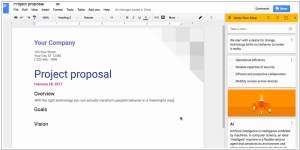
Google Keep, a note-taking app that competes with Evernote and Microsoft's OneNote, has now been integrated into Google's suite of business applications, G Suite. Additionally, Google Keep is now seamlessly integrated with Google Docs, allowing users to easily drag and drop notes from Keep into their work documents. This feature is currently available exclusively on the web and requires the user to have Docs loaded and open in their browser. To access the Keep notepad, users can navigate to the Tools menu, which will display the Keep notes within a sidebar in the Docs user interface. From there, users can effortlessly retrieve notes, including images and checklists, and insert them directly into their document. Furthermore, users have the ability to search their Keep notes directly from Google Docs and even create new notes in Keep while working within Docs.
2016. Google Keep gets support for #labels (hashtags)
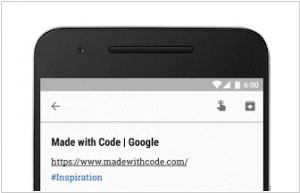
The note-taking app Google Keep has introduced a convenient way to organize and categorize notes using #hashtags. This new feature enables users to easily keep track of various items, such as to-do lists for a #trip or a collection of favorite #recipes. Additionally, the app now offers a Chrome extension that allows users to swiftly add webpages to their notebooks. With a simple click on the Keep badge, users can add a link to a note from any website, or they can create a new note directly from the right-click menu by selecting text or an image.
2013. Google Keep adds location-based reminders
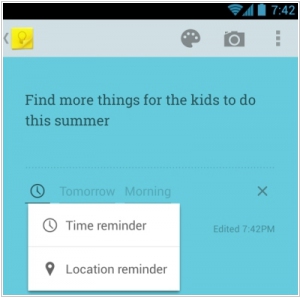
If you are responsible for managing a business or a department within a company, chances are you have numerous tasks to remember and may rely on a reminder application. One such example is Google Calendar, which can send you emails or SMS notifications to remind you of important events like birthdays, client calls, or advertising payments. However, if you utilize the online note-keeping application Google Keep, you can take advantage of a different type of reminder called a "location-reminder." This feature triggers a notification on your phone when you arrive at a specific place. For instance, you can set a reminder to send an email once you arrive at your office, purchase printer paper upon entering a store, or visit a customer when you arrive in London. It's worth mentioning that Google Keep now also offers the traditional time-based reminders in addition to these location-based reminders.
2013. Google trolls users. Launches online notebook Google Keep
Google has launched a new service - Google Keep. It's an online notebook, where you can add notes (text, pictures, lists). It works in browser and on Android. It doesn't provide any way to organize the notes (no folders, tags), you can't insert links in note and share notes. But it can transcript speech to text on the fly (on different languages). In general, it's the alternative to Evernote with its advantages and disadvantages. But, of course, in light of the recent events, it's interesting to know, why this service appeared. As you know, Google provided the similar service in the past - Google Notebook. It was even better than Evernote and only missed mobile app. It had many users. But then it was closed. ***
2008. Remember The Milk Comes to the iPhone
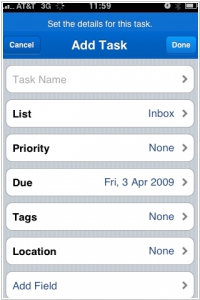
Fans of the popular web-based calendar and reminder application, Remember the Milk, can now rejoice as the iPhone version of the app is finally available on the App Store. Distinct from the web version, which has long been optimized for iPhone and iPod Touch, this new release introduces a range of exciting features. With the iPhone app, users can now seamlessly synchronize all their actions on their iPhone or iPod Touch with the web version of Remember the Milk. They can effortlessly organize tasks by list, Smart List, tag, location, or time, while also having the ability to add notes to tasks and utilize the iPhone's GPS to see tasks located nearby. The app also offers advanced search operators for efficient task finding and various customization options. It is worth noting that the iPhone app is exclusively accessible to Remember the Milk Pro users, who pay a yearly fee of $25 to enjoy the enhanced features and benefits.
2008. Gmail’s New Gadget Support Lets You Remember The Milk
In a recent announcement, Google unveiled a new set of gadgets for Gmail Labs that provide integration with Docs and Google Calendar. However, the most noteworthy aspect (which received less emphasis) was the introduction of support for third-party gadgets, enabling users to enhance Gmail with additional features beyond Google's offerings. Remember The Milk (RTM), a popular To-Do list application, was one of the first developers to take advantage of this new capability. Previously, RTM relied on a Firefox extension for Gmail integration, limiting its accessibility. The new Gmail gadget, on the other hand, works across all major browsers without the need for plugins. Although adding the gadget requires some manual configuration, it provides a glimpse into the future of expanded developer access and integration possibilities within Gmail. Google is expected to further enhance the user experience and enable more Gmail add-ons to transition from plugins to native gadgets in the coming months.
2008. Remember the Milk Introduces Sync for Blackberry
MilkSync allows users to synchronize their Remember The Milk (RTM) tasks wirelessly with the built-in Blackberry Task application. While RTM has had MilkSync available for Windows Mobile for some time, the application is now publicly accessible and was inspired by Google's impressive calendar sync for Blackberry. To initiate the sync process, users install a small program on their Blackberry, which handles the synchronization. The RTM application provides a log of sync actions and allows users to customize sync preferences. After testing the application through the Pro Testing Program for about a week, it is evident that the sync function performs well, requiring users to set it up only once and then forget about it. However, there are limitations due to the relatively limited capabilities of the Blackberry task application and some issues with the Blackberry OS. It is recommended to carefully read the frequently asked questions (FAQ) on the RTM page to manage expectations realistically. While accessing RTM's full features by visiting the RTM page in the Blackberry browser is possible, MilkSync proves to be convenient for quickly adding or reviewing tasks on the phone without relying heavily on a stable data connection. To download the sync tool, users can simply visit www.rmilk.com/milksync using their Blackberry browser. However, it's important to note that beyond the 15-day trial period, the software requires a pro user subscription.

